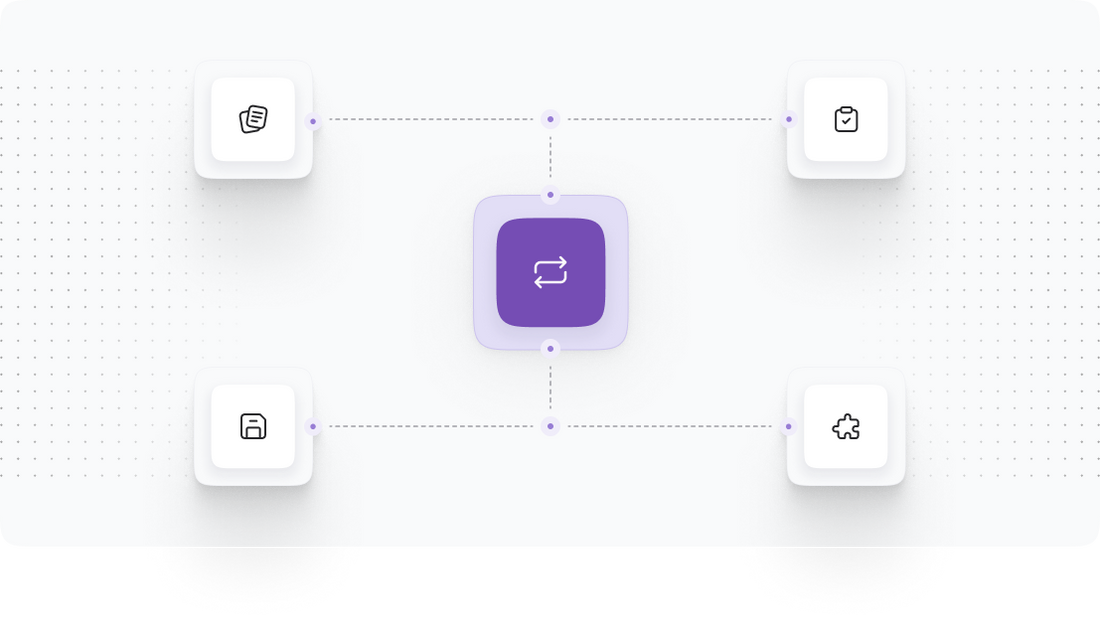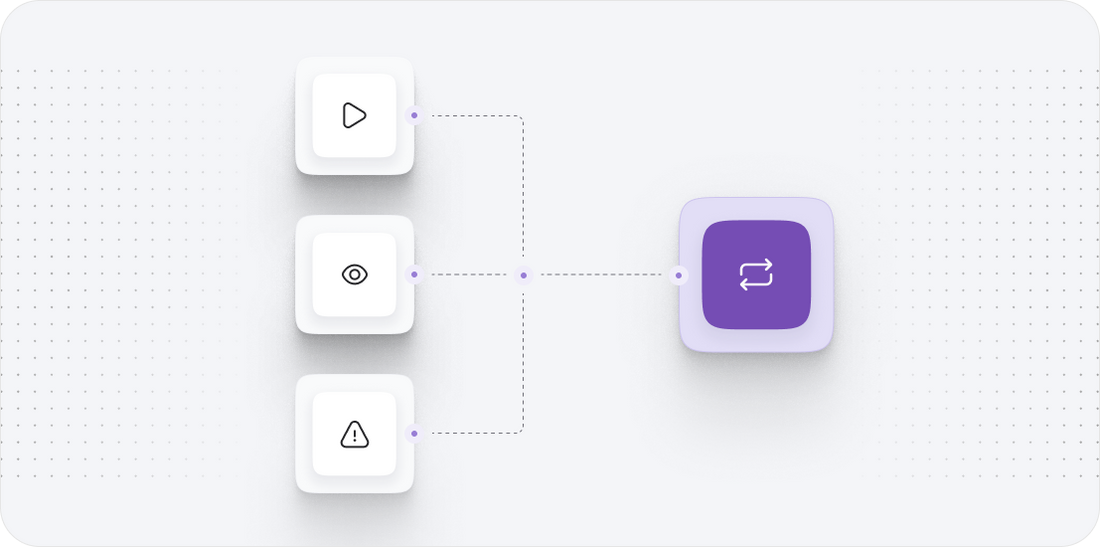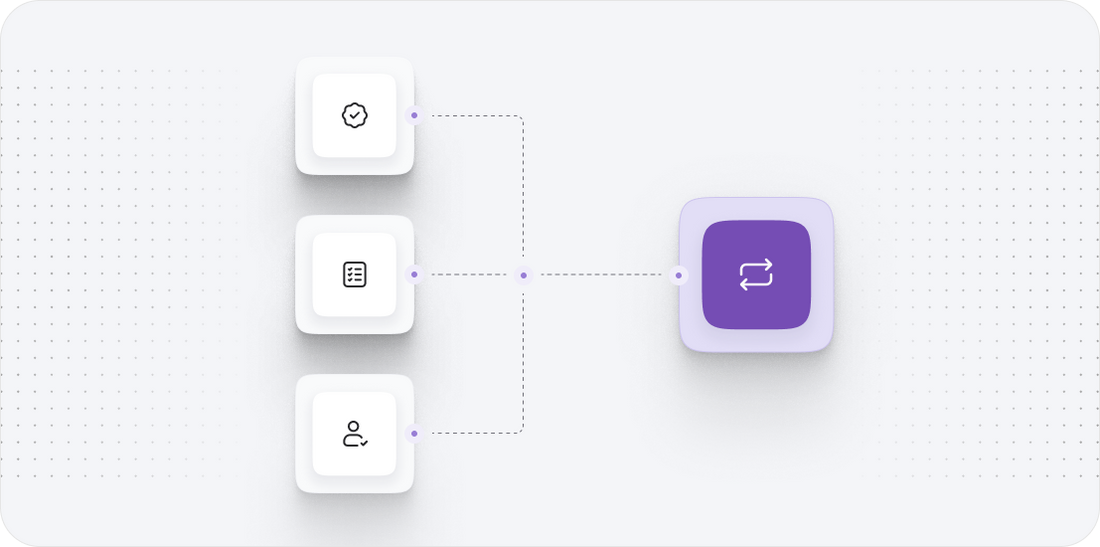





Magento to Shopify
Migrating your store from Magento to Shopify might seem daunting, but with proper planning and the right tools, it's a smooth process. Follow this step-by-step guide to ensure a successful transition.
Schedule a call
Step-by-Step Migration Guide: Magento to Shopify Migration Guide
Step 1: Create a Comprehensive Backup of Your Magento Store
Before initiating any migration process, creating a complete backup of your Magento store is paramount. This step ensures that all your data is secure and recoverable in case of unexpected issues during migration.
Step 2: Export Data from Magento
Exporting your data from Magento is a critical step that involves transferring your products, customers, orders, and other essential data into a format compatible with Shopify.
Step 3: Prepare Your Shopify Store
Setting up your Shopify store is crucial for a seamless migration. This step involves creating your Shopify account and configuring the basic settings necessary for your online store.
Step 4: Import Data into Shopify
With the data exported from Magento and your Shopify store prepared, the next step is to import the data into your new Shopify store, ensuring a smooth transition.
Step 5: Configure Payment and Shipping Settings
Once the data is imported, configuring your payment and shipping settings in Shopify is essential to ensure that customers can complete transactions smoothly.
Step 6: Optimize Store Performance and SEO
Once the foundational elements are set up, optimizing your Shopify store for performance and SEO is crucial for visibility and user experience.
Step 7: Test Your Shopify Store
Conducting thorough tests on your Shopify store is essential to identify any issues before launching it to the public.
Power Your Step - Get in Touch
Ready to start your migration journey? Contact PowerCommerce for expert support in your Magento to Shopify migration!
Step 1: Create a Comprehensive Backup of Your Magento Store
Creating a comprehensive backup of your Magento store is the foundational step in the migration process. This action serves multiple purposes: it safeguards your data, provides a recovery point, and allows you to revert to the original setup if necessary. By backing up your store, we ensure that no critical information is lost during the migration to Shopify, which is crucial for maintaining operational continuity.
The objective here is to capture all essential data, including your product catalog, customer information, orders, and site configurations. This meticulous preparation prevents any potential data loss and helps avoid complications during the actual migration process. It is also recommended to perform backups regularly, not just prior to migration.
To create a backup of your Magento store, follow these steps:
- Access the Magento Admin Panel: Log in to your Magento admin panel using your credentials.
- Navigate to the Backup Section: From the Admin sidebar, go to
System>Tools>Backups. - Select Backup Type: Choose the type of backup you want to create. There are three options:
System Backup(comprehensive),Database Backup(just the database), andMedia Backup(includes media files). - Initiate Backup: Click on the
Create Backupbutton and confirm your choice. Wait until the process completes. - Download Backup Files: Once the backup is created, download the files to your local system for safekeeping. It's advisable to store these backups in multiple locations for added security.
In terms of technical considerations, ensure that your hosting provider supports the backup process and that you have sufficient storage space. Regular backups can also help mitigate risks associated with server failures and data corruption.
Best practices include routinely checking backup integrity and ensuring that backups include all necessary components, such as themes, plugins, and custom code changes. Lastly, consider automating your backup process through your hosting provider or third-party tools to enhance data security further.

Step 2: Export Data from Magento
After securing a backup of your Magento store, the next step is to export your data. This involves extracting your product information, customer details, order history, and any other relevant data from Magento. Having this data in a structured format is essential for a successful migration to Shopify.
The main objective here is to ensure that all necessary data is captured and formatted correctly so that it can be easily imported into Shopify. This step requires careful attention to detail, as any discrepancies may lead to data integrity issues once the migration is complete.
To export data from Magento, follow these detailed steps:
- Access the Data Export Section: In your Magento admin panel, navigate to
System>Data Transfer>Export. - Select Entity Type: Choose the type of data you wish to export, such as
Products,Customers Main File, orCustomer Addresses. - Set Export File Format: For compatibility with Shopify, select
CSVas the export format, as it is widely accepted. - Choose Export Settings: Configure additional settings as necessary, such as which attributes to include in the export file.
- Execute Export: Click on the
Exportbutton to generate the export file. Wait until the process completes and download the resulting CSV files to your local machine.
Technical considerations during this step include ensuring that the exported data adheres to Shopify's import requirements, which may involve cleaning up data beforehand. This could mean standardizing product descriptions or ensuring customer email formats are consistent.
Best practices recommend reviewing the exported data for any anomalies or errors that may arise during the export process. A checklist can help ensure that all essential data points are covered, including product SKUs, prices, and inventory levels.
Common tools for exporting data from Magento include the built-in export functionality, as well as third-party extensions designed to simplify the process, such as Data Export tools available on the Magento Marketplace.

Step 3: Prepare Your Shopify Store
Before beginning the data import, it’s essential to prepare your Shopify store. This involves setting up your Shopify account, configuring basic settings, and ensuring that your store is ready to receive data from Magento.
The objective of this step is to create a conducive environment on Shopify where all your data can be imported without compatibility issues. Proper setup is fundamental to maximize the functionality of your new Shopify store and enhance the overall user experience.
To prepare your Shopify store, follow these steps:
- Sign Up for Shopify: Visit the Shopify website and sign up for an account. Choose the plan that best suits your business needs.
- Configure Basic Settings: In the Shopify admin panel, navigate to
Settings. Here, you can configure essential settings such asGeneral(store name, email),Payments(select payment gateways), andShipping(set shipping rates and zones). - Select a Theme: Choose a theme that aligns with your brand identity. You can browse the Shopify Theme Store for various options and apply your chosen theme.
- Install Necessary Apps: Explore the Shopify App Store to find applications that complement your business requirements, such as inventory management tools, email marketing apps, or customer support solutions.
- Customize Your Store: Use the Shopify customization options to adjust your store’s layout, colors, and fonts to match your branding.
Technical considerations include ensuring that your Shopify store settings align with your operational goals, especially in terms of payment processing and shipping logistics. Take the time to test these functionalities to ensure they work as expected.
Best practices involve leveraging Shopify’s extensive documentation and support resources to aid in store setup. It’s also beneficial to check the compatibility of any third-party apps you plan to install with your existing Magento functionalities.

Step 4: Import Data into Shopify
Now that you have exported your data from Magento and set up your Shopify store, it’s time to import the data into Shopify. This process is crucial for transferring your product catalog, customer information, and order history to ensure continuity in your operations.
The objective of this step is to accurately import the data and verify that it appears correctly in your Shopify store. A successful import is vital for maintaining your brand’s integrity and ensuring a seamless shopping experience for customers.
To import data into Shopify, follow these steps:
- Access the Import Section: In your Shopify admin panel, go to
Products>Importfor product data, orCustomers>Importfor customer data. - Select Import File: Click on
Choose Fileto upload the CSV file you downloaded from Magento. - Map Data Fields: Ensure that the data fields in your CSV file correspond to the fields required by Shopify. This may involve adjusting headings in your CSV to match Shopify's format.
- Initiate Import: Once everything is set, click on the
Importbutton and wait for the process to complete. This may take some time depending on the size of your data. - Review Imported Data: After the import process, review the data to ensure accuracy. Verify that all products, customers, and orders appear correctly in your Shopify store.
Technical considerations at this stage include ensuring that the CSV file is formatted correctly and free of errors that could cause the import to fail. Regularly check for any system messages or alerts that may indicate issues.
Best practices during this import process include keeping your CSV files organized and using simple and clear headings. Consider running a test import with a small subset of data first to identify any potential issues before proceeding with the full import.
Common tools for importing data into Shopify include Shopify's built-in import tools and third-party applications like Matrixify (formerly Excelify), which provide more flexibility and options during the import process.

Step 5: Configure Payment and Shipping Settings
After successfully importing your data, the next step is to configure payment and shipping settings in your new Shopify store. This process is crucial as it directly impacts your customers' ability to make purchases and receive their orders efficiently.
The primary goal of this step is to set up payment gateways and shipping methods that are secure, reliable, and aligned with your business model. A well-configured payment and shipping process enhances customer satisfaction and reduces cart abandonment rates.
To configure payment and shipping settings in Shopify, follow these steps:
- Set Up Payment Gateways: Navigate to
Settings>Payments. Choose from Shopify's supported payment gateways (such as PayPal, Stripe, or Shopify Payments) and follow the prompts to connect your accounts. - Configure Checkout Settings: Adjust settings for checkout options, such as requiring customer accounts, enabling guest checkout, and setting up order notifications.
- Set Up Shipping Options: Go to
Settings>Shipping and delivery. Here, you can define shipping zones, rates, and methods (e.g., standard shipping, express shipping, etc.). - Test Payment Process: Conduct test transactions to ensure that the payment gateway and shipping processes work correctly. This is crucial for identifying any issues before going live.
Technical considerations include ensuring that your payment processor complies with PCI standards for secure transactions. Additionally, consider the transaction fees associated with different payment gateways and whether they align with your business model.
Best practices involve clearly communicating shipping rates and expected delivery times to customers. Transparency in this area can enhance customer trust and satisfaction.

Step 6: Optimize Store Performance and SEO
After configuring payment and shipping settings, the next important step is to optimize your Shopify store for performance and search engine optimization (SEO). This ensures that your store not only performs well but also ranks effectively in search engine results, driving traffic and increasing sales.
The objective of this step is to enhance the loading speed of your store and implement SEO best practices that improve visibility on search engines. A well-optimized store provides a better user experience, leading to higher conversion rates.
To optimize your Shopify store, follow these steps:
- Improve Store Loading Speed: Optimize images by compressing them and using appropriate formats. Utilize Shopify’s built-in image optimization features and consider using a Content Delivery Network (CDN) for faster loading.
- SEO Best Practices: Implement SEO best practices by ensuring that your product titles, descriptions, and alt tags contain relevant keywords. Use descriptive URLs and create a sitemap for better indexing.
- Set Up Google Analytics: Integrate Google Analytics with your Shopify store to track visitor behavior and gather insights on your site's performance. This data is invaluable for making informed decisions.
- Install SEO Apps: Consider using SEO apps from the Shopify App Store that can help you analyze and improve your store’s SEO performance.
Technical considerations during this step include ensuring that all custom code or apps you use do not conflict with Shopify’s performance capabilities. Regularly monitor your store’s speed and performance metrics.
Best practices recommend regularly updating your SEO strategy based on performance data and trends. Conduct periodic audits of your store’s SEO to identify areas for improvement.

Step 7: Test Your Shopify Store
After optimizing your Shopify store, the final preparatory step before launching is to conduct comprehensive testing. This phase is crucial to ensure that every aspect of your store functions correctly and provides a seamless experience for customers.
The objective of this step is to identify and rectify any issues that could hinder user experience or operational efficiency. A thorough testing process can help prevent potential problems that might arise after launch, protecting your brand’s reputation.
To test your Shopify store, follow these steps:
- Test Navigation: Navigate through your store to ensure that all links and buttons work correctly. Check that your categories, products, and pages load accurately.
- Conduct Test Transactions: Perform test purchases using different payment methods to confirm that the checkout process is smooth and functional. This includes verifying order confirmations and payment receipts.
- Check Mobile Responsiveness: Access your store from various devices (smartphones, tablets, desktops) to ensure that it is mobile-friendly and responsive.
- Review SEO and Performance: Use tools like Google PageSpeed Insights to evaluate your store’s performance and address any identified issues.
Technical considerations include ensuring that your site is compatible with different browsers and devices. Regularly update your testing protocols based on changes made to your store.
Best practices involve documenting any issues found during testing and creating a checklist for future reference. This can help streamline future migrations or updates.

Power Your Step - Get in Touch
At PowerCommerce, we understand the complexities involved in migrating your ecommerce platform. Our team of experts is dedicated to ensuring a smooth transition from Magento to Shopify, leveraging our extensive experience and cutting-edge technology to minimize downtime and maximize performance.
Don’t navigate this process alone! Our specialized migration services are tailored to meet the unique needs of your business. We focus on preserving data integrity, optimizing storefront performance, and providing continuous support throughout the migration process.
To get started, contact us today!
- Visit our contact page: https://powercommerce.com/contact
- Call us at: 800-099-9090
- Email us at: info@powercommerce.com
Let us help you power your ecommerce success! With our customer-centric approach, we prioritize your needs and provide flexible pricing options, ensuring a risk-free consultation process. Trust PowerCommerce as your partner in ecommerce growth.
Stay aligned on what's happening in the commerce world
Trusted by 1000+ innovative companies worldwide
Schedule Your Migration Today
For businesses prioritizing simplicity, scalability, and robust support, Shopify is the clear winner.
Looking to migrate without hassle? Power Commerce can handle the entire process, ensuring smooth data transfer, store setup, and post-launch success.
Marka Marulića 2, Sarajevo, 71000 BiH
00387 60 345 5801
info@powercommerce.com
